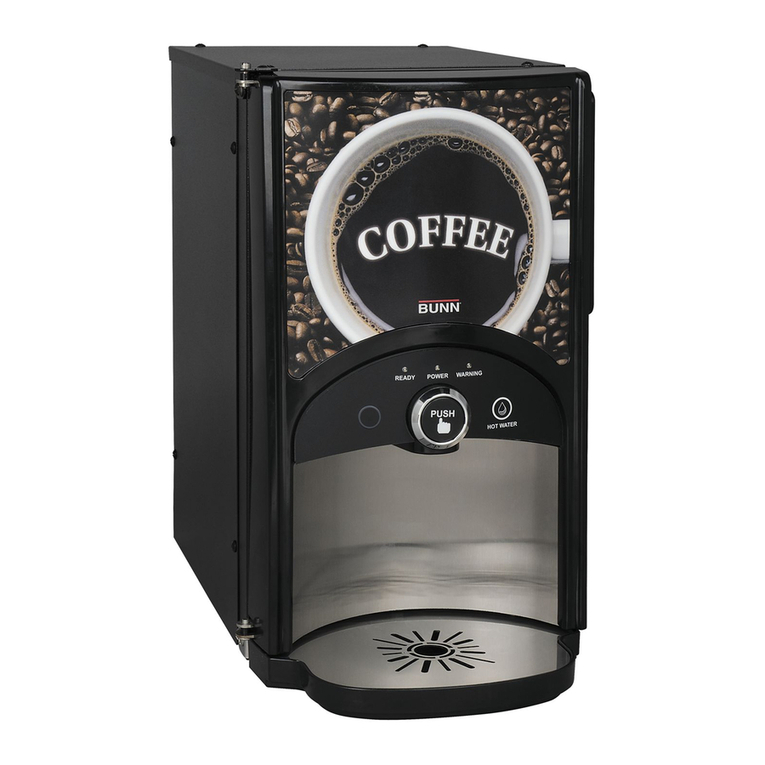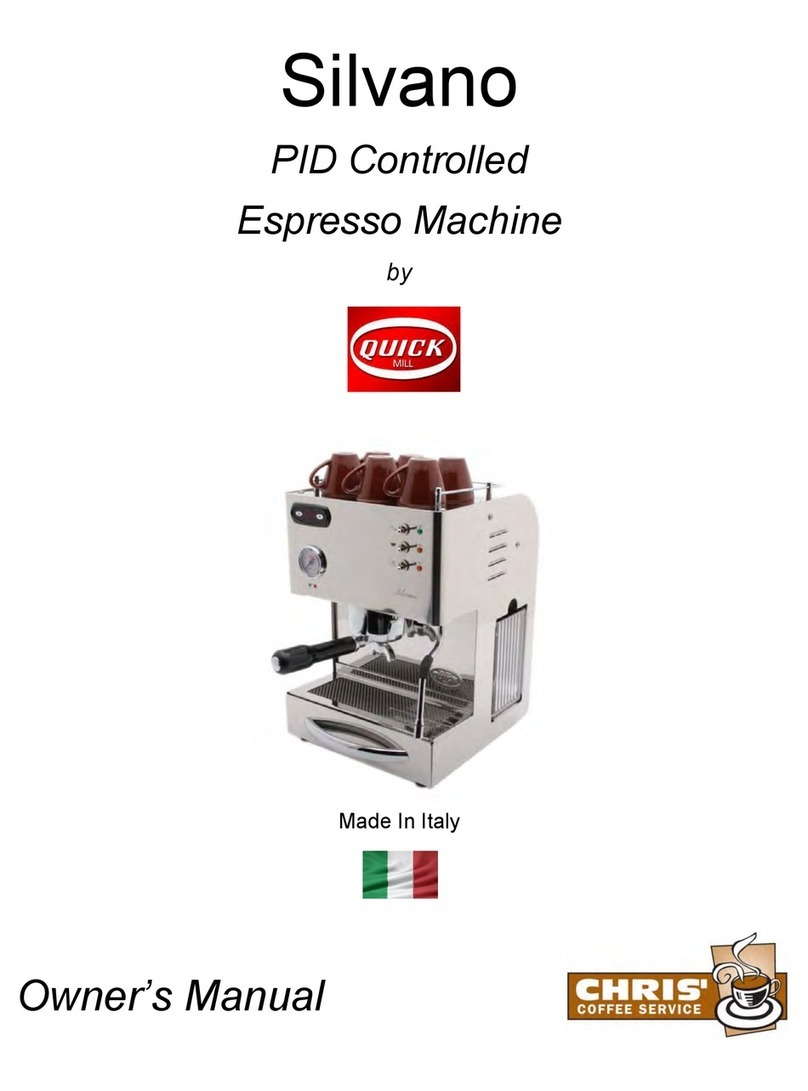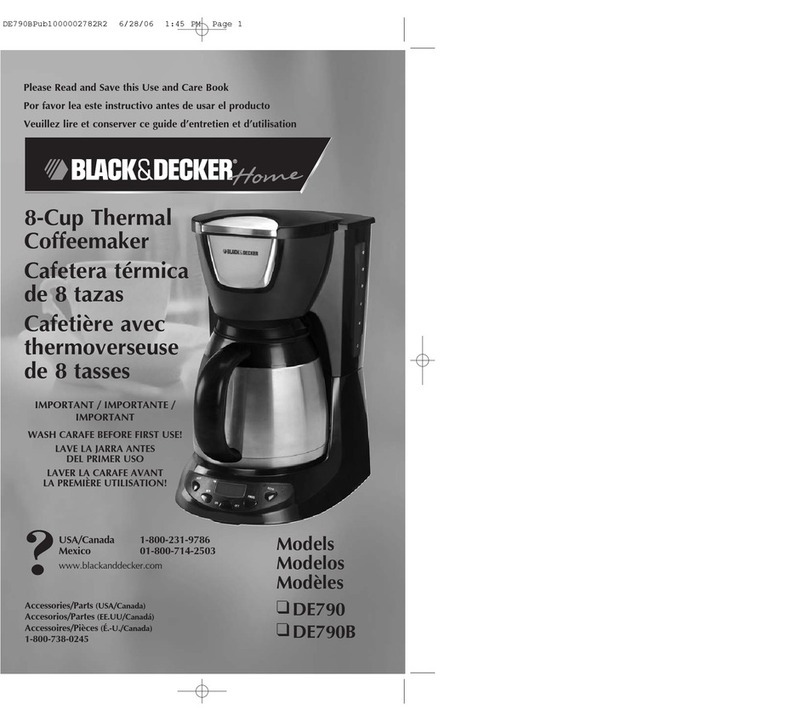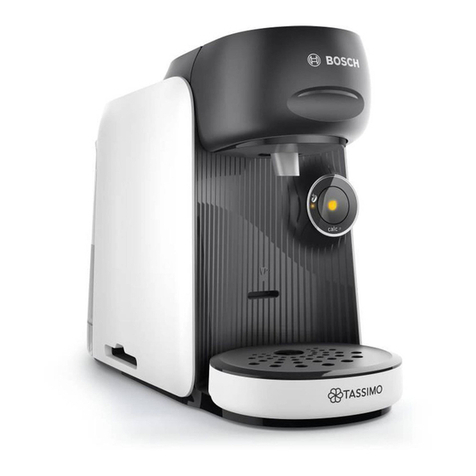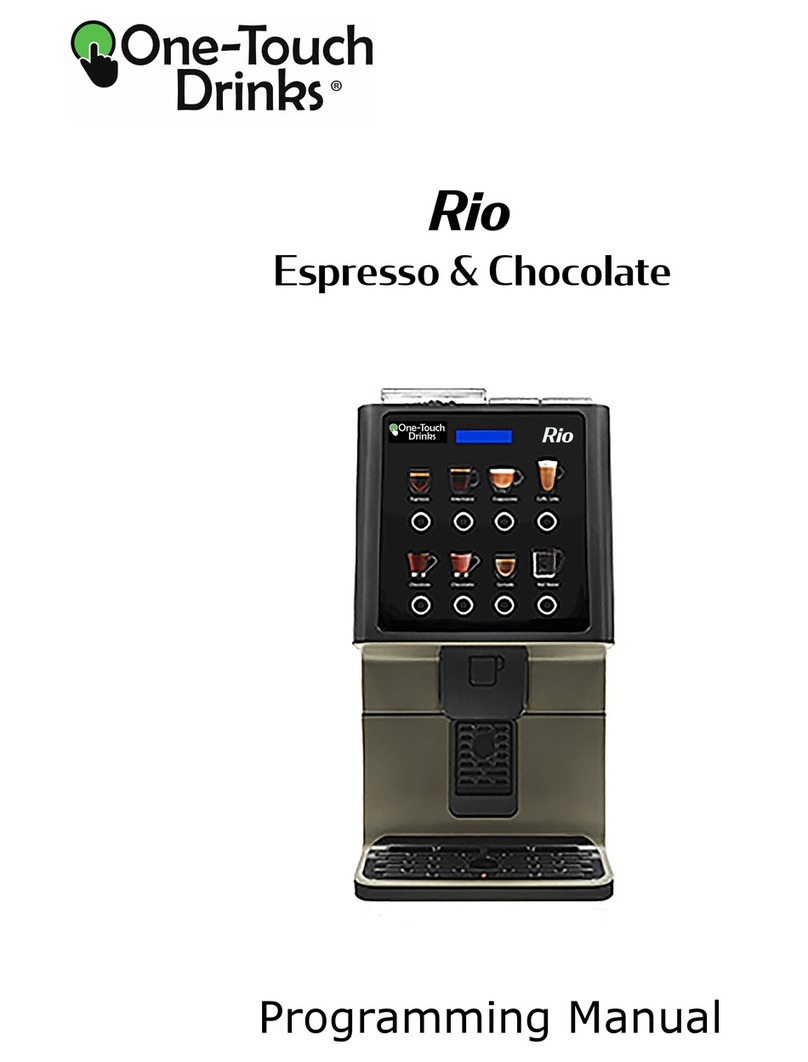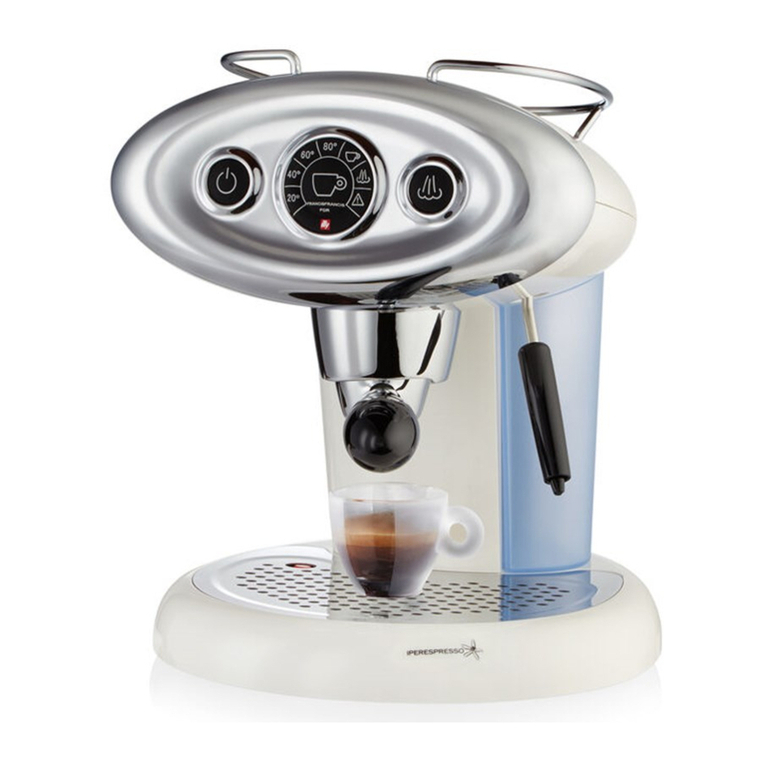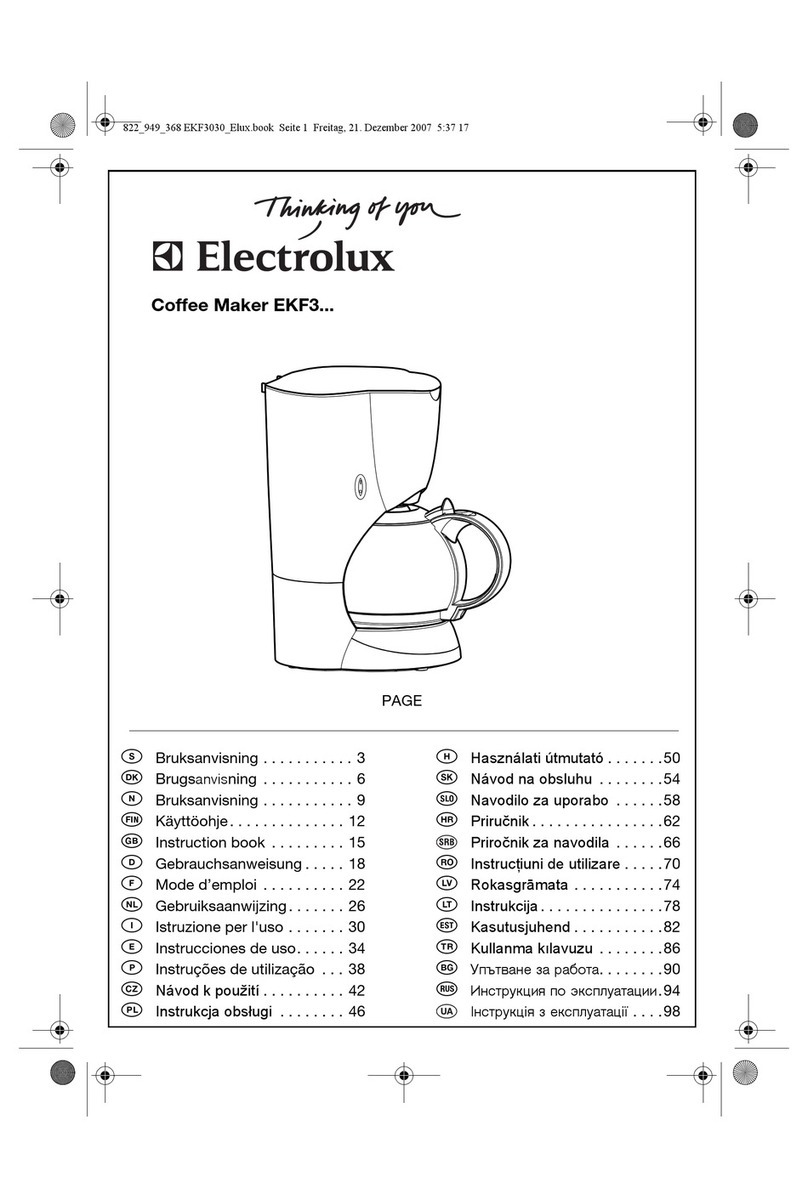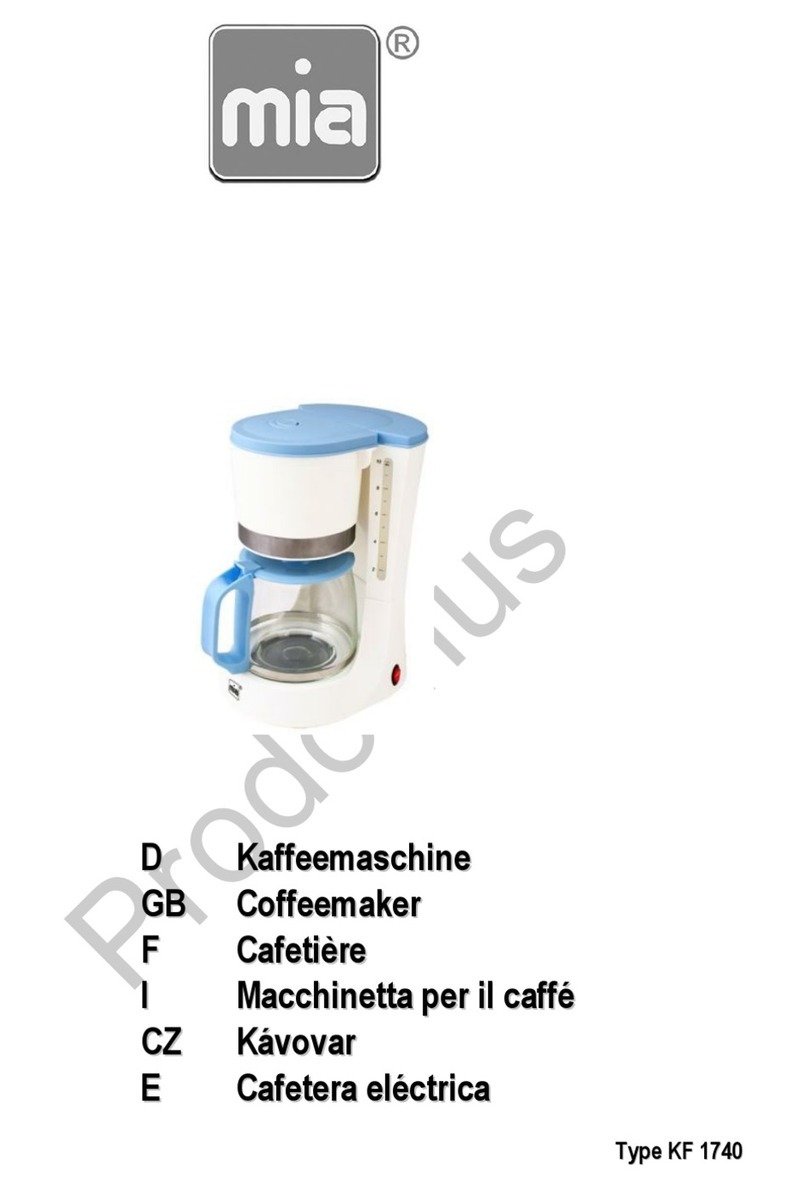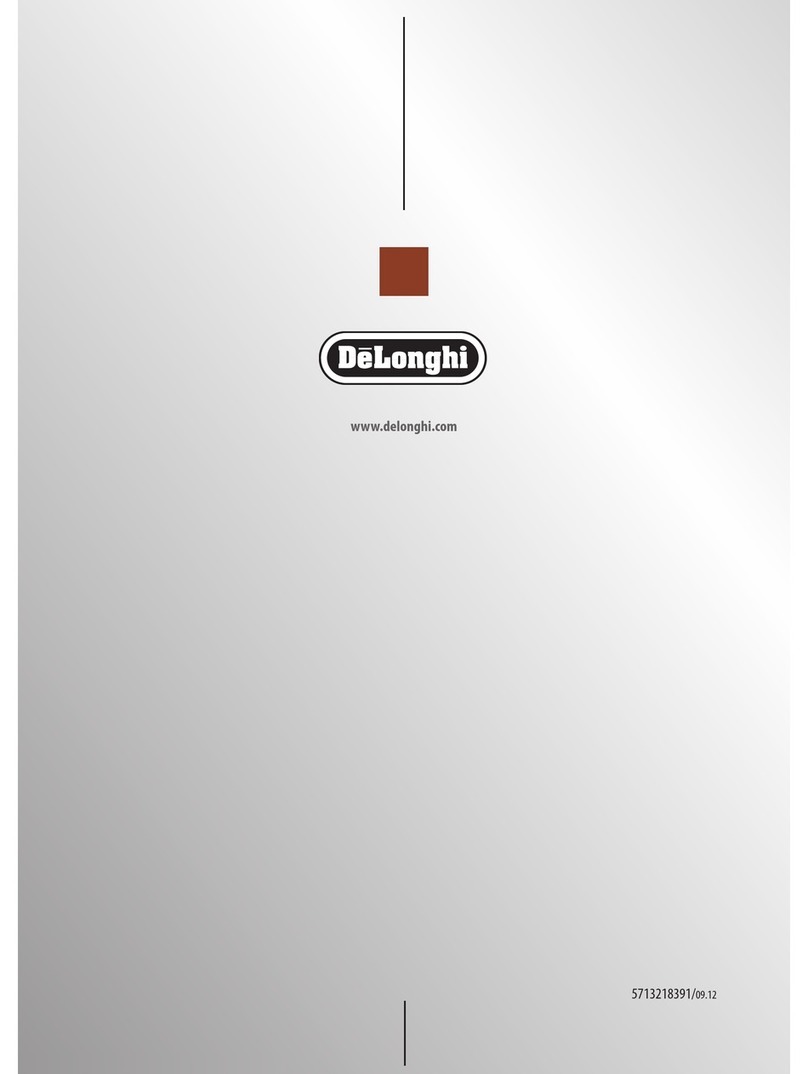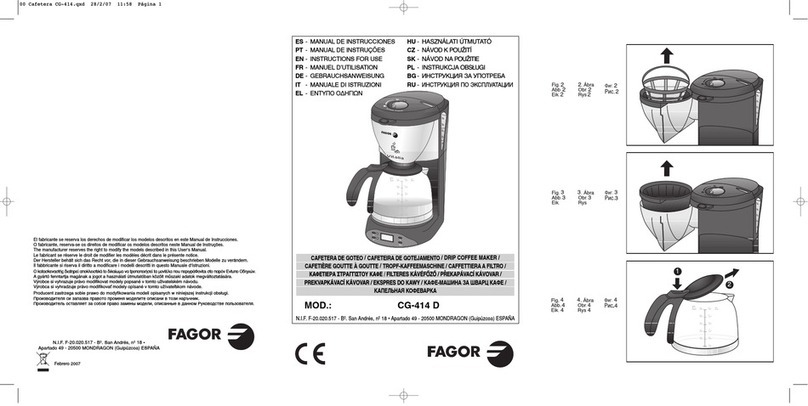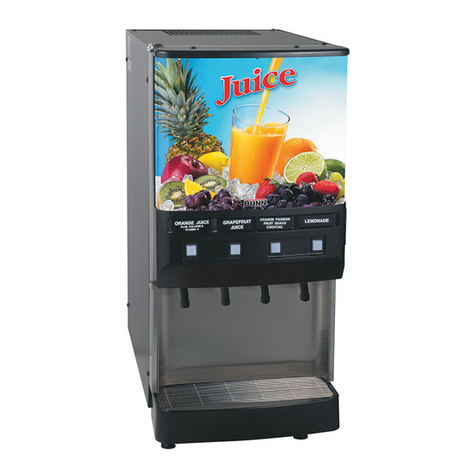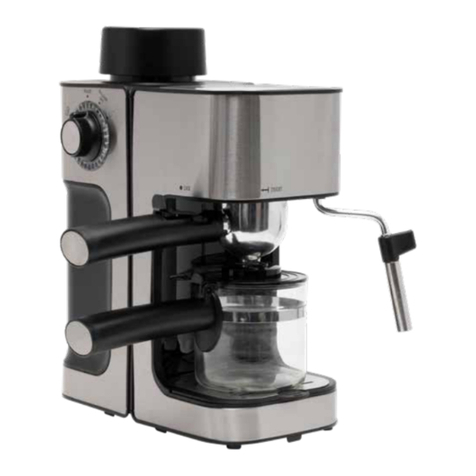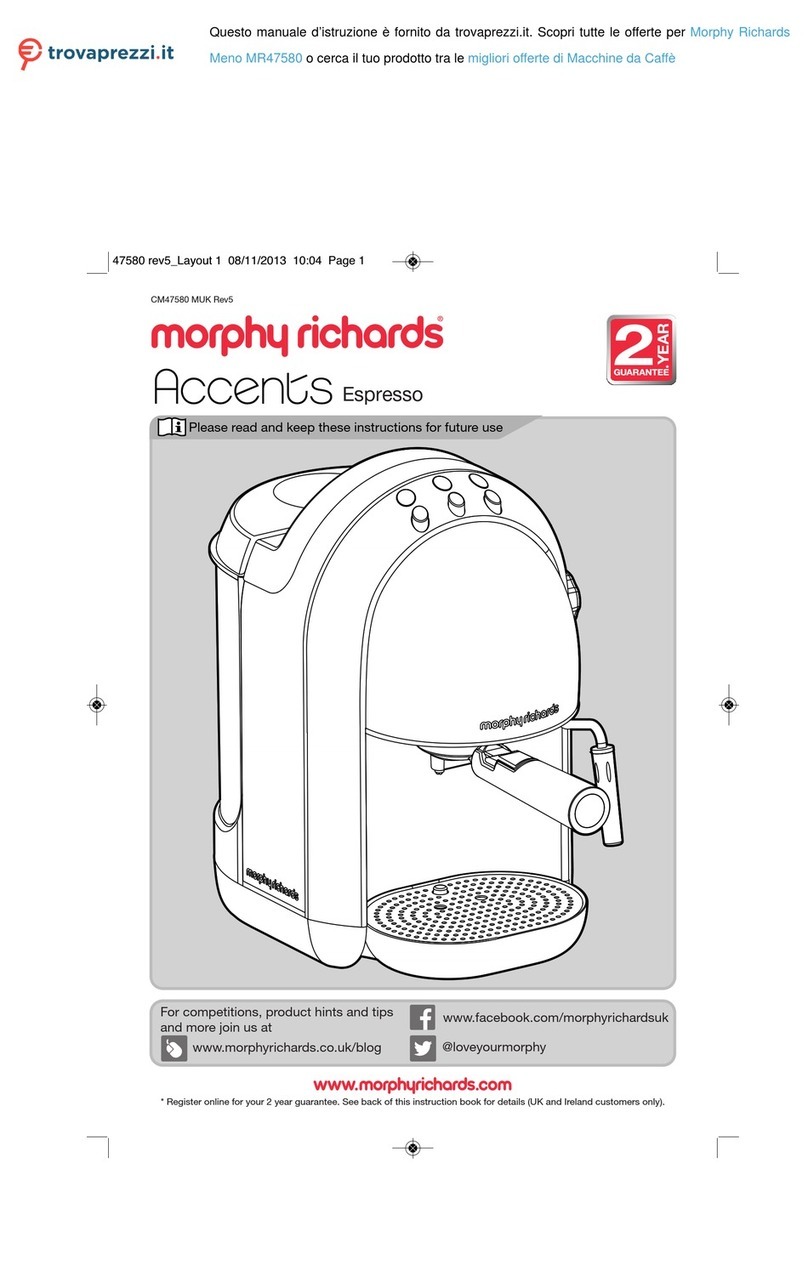
Rio Technical Principles
06 – 2019
8
A6. Coffee grinder
The M03 One-Touch Drinks model
: . Technical Characteristics
Turning the handle anti-clockwise gives a coarser grind and moving it clockwise
gives a finer grind. The grinder used in Rio is regulated by time. Grinder
programming in function 315 (check details in programming manual)
To get the desired amount of coffee for your Service: first adjust the
“grinding point” using the handle. After set a time for the grinder in the function
315 “grinding time”. It is advised to scale the ground coffee in each Service. Last,
adjust the piston washers in the best position (check in section A7. Coffee Group
+Piston).
Turning the handle that adjusts the grinding point will have an effect on
ground coffee granulometry, but also on ground coffee Flow. Remember that
grinder is controlled by time: 3 seconds of coarse coffee will make more
grams than 3 seconds of thin coffee.
It can be said that turning right or left the grinding point handle will vary the amount of
coffee ground for your service. In that case, the grinding time set in function 315
must be modify as well to keep getting the desired amount of coffee for each service.
A7. Espresso Group+Piston/Brewer
Made of resin, it is the element that the machine uses to make the espresso coffee.
The group has moving parts that are activated by a 24 Vdc motor that moves
a crank which moves the coffee from the dosage element to the piston. At the
same time it also moves a lever that activates a micro switch; this indicates the
position of the infusion element to the control board.
Voltage 230 Vac
Nominal power 400 w
Speed 1250 rpm
Diameter of the grinders 63 mm
Grind points 0.026 mm
